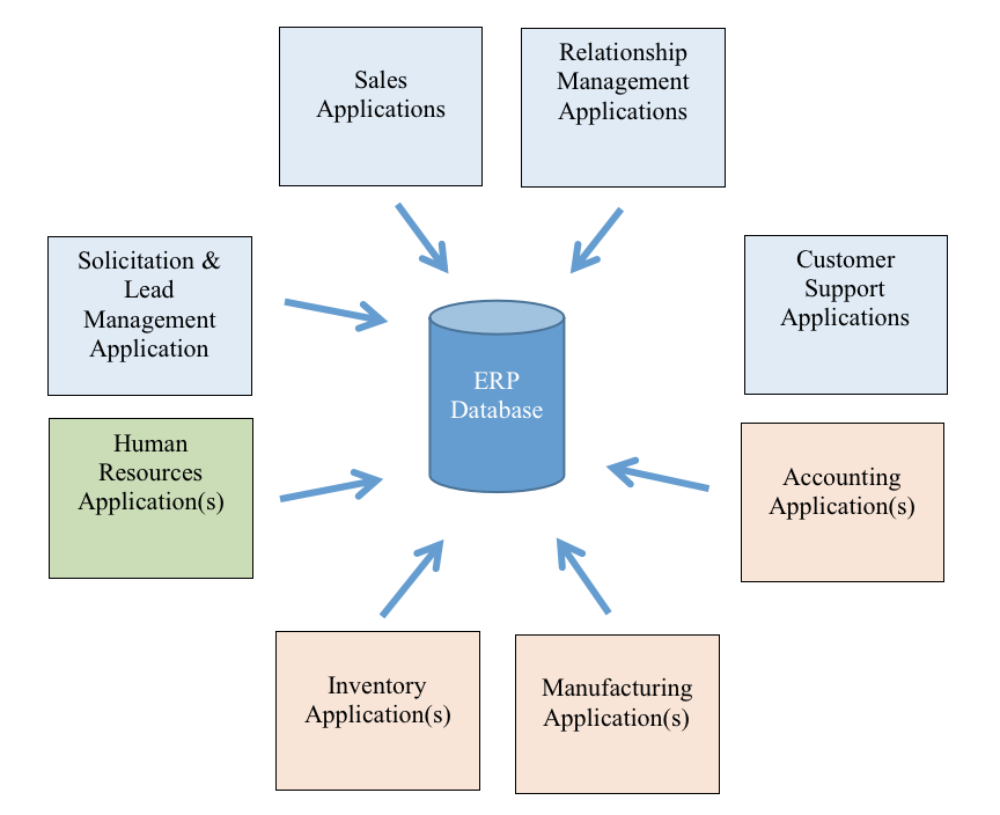Mobilising the fundamentals of information systems (IS) to contribute to organisational strategy is one of the pillars of competitive advantage in the digital age. The Functional Area Information Systems (FAIS), linked to the Enterprise Resource Planning system (ERP) in the diagram below, support different business processes.
Business processes (BP) are a continuous collection of related activities that create a product or service that is of value to the organisation. Each FAIS helps enable its connected BP, for example, the manufacturing FAIS facilitates the manufacturing BP. The enterprise IS includes communication and coordination among the ERP, FAIS, and their BP. The nuts and bolts of this interaction and information and data sharing requires ongoing review and management. IS can automate and semi-automate BP, but management is still required to fine tune their relevance.
Globalisation, information overload, and sustainability expectations are all examples of the many, very real pressures presently affecting the business landscape. Responding to the constant and rapidly changing pressures applied by technology, society, and the market requires the application of knowledge from all sources. To allow this to happen, the business and IT foundations should be connected by common overarching principles, this concept is called IT alignment, or just alignment. A business with good alignment can answer “yes” to the following six questions:
Do you view IT as an innovation engine that continually transforms your business and creates revenue streams? With the exponential growth of computer power, there should be abundant ways for your business to take advantage. Objective self-assessment and open, clear communication channels between organisation departments and levels can identify opportunities. There is the opportunity for revenue streams to be added to your continuously transforming enterprise.
Is the best possible user experience for internal and external stakeholders considered to be of the utmost importance? This is imperative in helping retain your best employees and customers.
Are business and IT professionals being deeply exposed to each other’s departments, roles, and job functions? Data collected by FAIS can be tailored and packaged as required. With shared and clear understandings of employee roles across the organisation, the most relevant information can be extracted. As expectations change in response to technical, societal, and market pressures, the empathy this creates can be an asset.
Do you make overarching business goals clear and available to all IT and business employees? Focus and direction toward goals and the bigger picture will more likely be achieved if this information underpins the work of all members of the organisation.
Are you ensuring that all employees are aware of how the company makes and loses money? In a similar vein to question 4, it is beneficial for all employees to know the “how”, of achieving what the enterprise has set out to do. Clarity around the concepts contained in the two preceding questions should be available to all internal stakeholders.
Does the organisation provide and nurture a vibrant and inclusive culture? The flexibility and “non-negotiables” within the information systems can be shared with any party engaged by the enterprise. An inclusive culture where there is free and willing sharing of ideas through clear communication channels creates the opportunity for agility. An organisation that is responsive is best positioned to take advantage of opportunities.
Alignment will assist in the delivery of the competitive strategy, which is created by a business as a guide for its impact in the marketplace. The IS that facilitate and support the delivery of this strategy earn the title of Strategic Information Systems. Alignment and correctly structured IS allow decisions on strategy to be based on effectiveness and not the numerous problems that may undermine its delivery. As a starting point, a business could clarify where it sits in the following matrix.
Is your business:
Complimenting this, by using Porter’s Value Chain Model, an organisation can identify the points in its IS where value can be added to drive competitive advantage. The significance of the enterprise tech stack to organisational strategy should be clearer to the reader—their acquisition and the ethical issues they present also bear consideration.

















